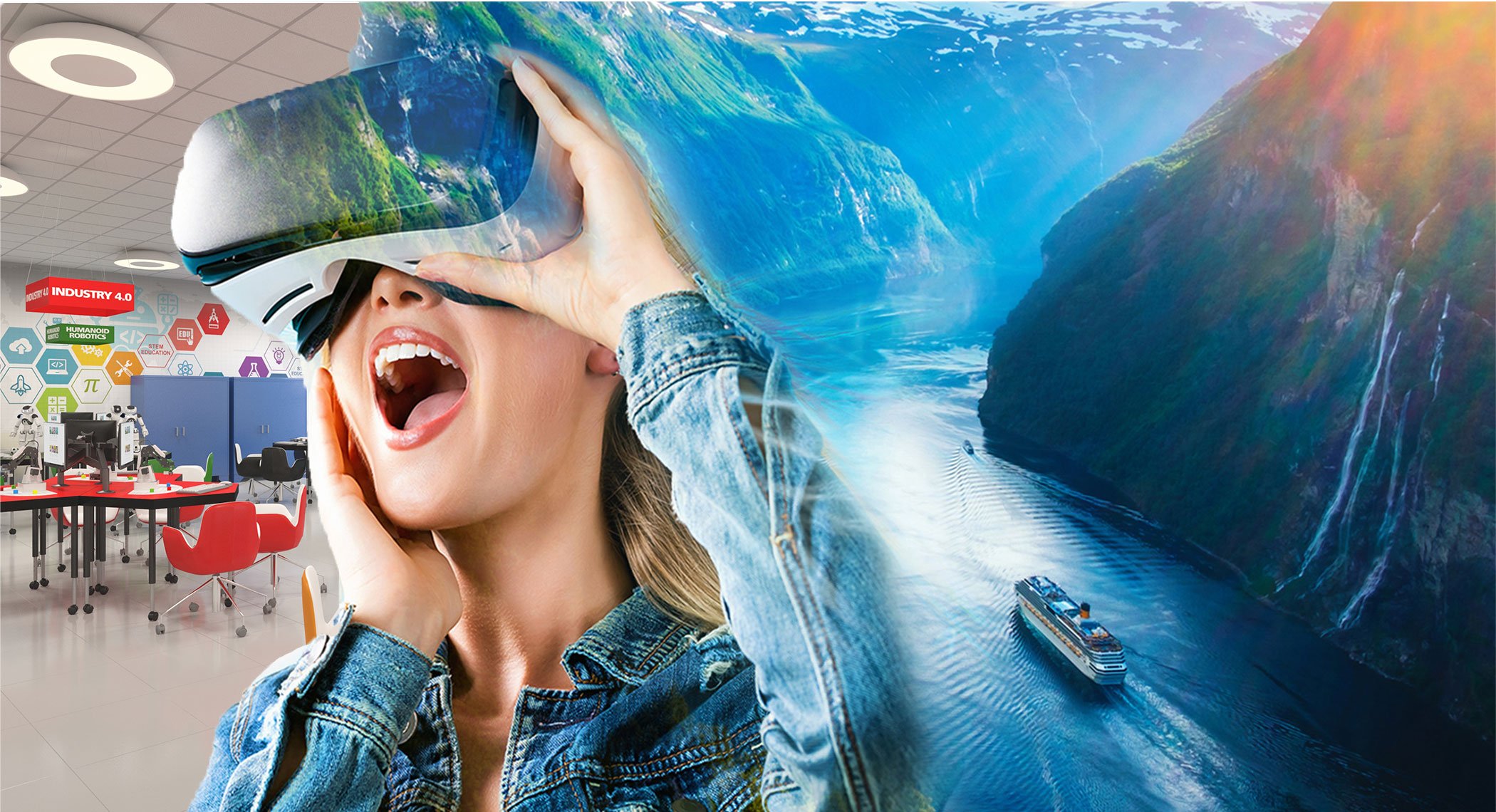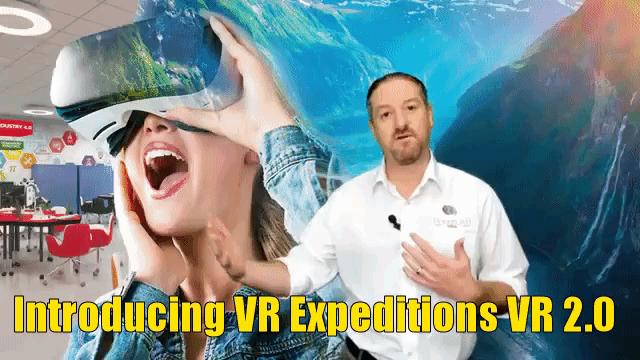By Nancy Howard

VR has a significant impact on educational processes: only through this technology can students safely and in detail, see what they are learning, from the decay of atoms to extinct organisms. According to analysts at ABI Research, by 2022, the global market for VR-learning will grow to a total of $6.3 billion. As early as the end of 2018, virtual technology has been implemented in 18% of U.S. curricula. Let's take a look at how VR is used to enhance educational processes.
Face-to-face Education
Leading IT solutions providers for education sites have implemented VR technologies a while ago. The situation is quite different within education. Only a few are practically enhancing the educational process with VR technologies. There are usually the following options. During a full-time course, virtual technology can be used as a supplement to a lecture or as a full-fledged substitute, but the first option is more common. Such a lesson is based on the following scheme:
-First, the teacher explains the material to the students;
-Then the teacher connects VR so that students can perceive what has been explained to them visually.
In this way, virtual technology fulfills a video or presentation role but provides a more in-depth immersion. Studies show that students learn and remember information much better when using VR. This applies to almost any field of study.
At North Carolina State University, virtual reality is used to study biology, ecology, evolution, and other natural sciences. During virtual field studies, students find, observe, and study organisms in their natural habitat.
At Pennsylvania State University, students in all majors take hands-on classes in classrooms equipped with virtual reality technology. During the hands-on sessions, they study situations they may encounter in the future. This approach improves the learning process and prepares students for real-life work situations.
A similar approach is taken at the British University of Westminster, where a virtual area was built for students studying criminal law. In this area, they solve cases, hunt for evidence and clues, interrogate suspects, and follow a killer trail.
Technology companies are actively working to shape VR educational content. For example, RobotLAB offers full VR Expeditions 2.0 in all subjects. The content is developed in partnership with Encyclopedia Britannica and comes in three different versions, from basic to advanced.
Distance Education
In this format of education, the student can be anywhere in the world during the lesson. In the same way, the tutor is not tied to their office. The class takes place in a virtual classroom where students can listen to lecturers, communicate with each other, and even do practical exercises. Thus, this is a more advanced version of video conferencing because, during a Zoom call, students don't have as many interactive learning opportunities.
It's also convenient that the teacher is also able to see which students are present for the lesson because many models of virtual helmets, such as the Oculus Rift and HTC Vive, have a built-in light sensor that shows whether or not the helmet is in use at the moment.
Remote VR learning sounds like a real sci-fi movie about the future, but it's possible right now. Of course, the maximum realism of images and sensations is still far away. Still, the level of information transfer and assimilation in complex products is at an all-time high.
Self-Education
Many of the educational courses developed can be adapted for self-study. The lessons themselves can be posted in online stores (e.g., Steam, Oculus Store, App Store, Google Play Market) so that everyone has the opportunity to master or repeat the material on their own.
Some products are already available online.
Universe Sandbox 2. An actual space simulator in which students can visually perceive how gravity, climate, and physical interactions work in space.
The Body VR. Rightfully one of the best simulators to study the insides of the human body, designed for medical students. It allows you to travel through blood vessels, see human cells, and deadly viruses.
Google Earth VR. Allows you to see the world's landmarks "full-size" and view them from different angles. The Egyptian pyramids, the Eiffel Tower, Niagara Falls - all the most unique objects become closer than ever.
However, learning with a teacher is likely to be much more effective because they will be able to supervise the learning process professionally. That's why, for example, RobotLAB's VR Expeditions 2.0 kits have devices for both students and tutors.
In this regard, different software can be compared to studying theoretical material on your own or doing hands-on activities in the classroom. The difference is colossal.
So, as you can see, there are a lot of VR options within education. And although it's difficult to provide full immersion for all students at once, you can start small, and it will already improve learning. After all, it's not only exciting but also safe and helpful. How else can students practically be in space during a lesson?
Discover more about Virtual Reality with RobotLAB!

Author bio
Nancy P. Howard has been working as a journalist at an online magazine in London for a year. She is also a professional writer in such topics as blogging, IT and marketing.


